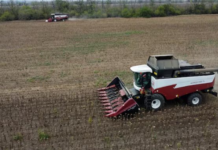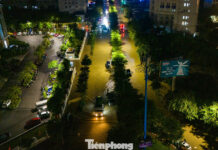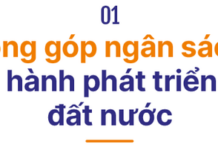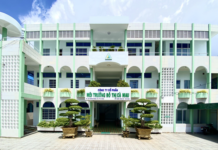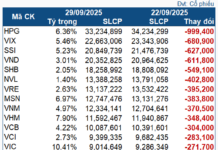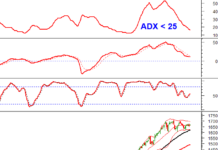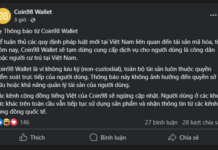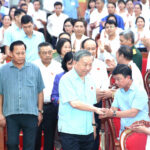In 2024, Ho Chi Minh City is expected to spend over 24,000 billion dong on land clearance compensation from public investment sources. If land clearance work is done well and promptly, it will create favorable conditions for the city to achieve 95% disbursement of public investment capital as determined by the city’s leadership.
Focus on land clearance
According to the 2024 public investment plan announced by the Department of Planning and Public Investment, Thu Duc City has the largest compensation capital – over 9,000 billion dong – with many large projects, including the Ring Road 2 project.
Mr. Mai Huu Quyet, Vice Chairman of the People’s Committee of Thu Duc City, said that the Working Group for Reviewing and Resolving Difficulties and Obstacles in Compensation Work, Support, and Resettlement to speed up disbursement of public investment capital (Working Group 2591) of Ho Chi Minh City has just worked with the People’s Committee of Thu Duc City, reaching an agreement that on February 3, a launching ceremony for the compensation work and land clearance of Ring Road 2 will be held, with an aim to achieve 95% disbursement this year.
The Ring Road 2 project consists of 2 sections. In which, section 1 from Phu Huu Bridge to Vo Nguyen Giap Street is 3.5 km long, with a total investment of about 9,328 billion dong, and a land clearance cost of about 6,675 billion dong. According to the plan, from the first quarter of 2024 to the second quarter of 2025, compensation, land clearance, and resettlement for about 600 affected households will be implemented. The project will start construction from the second quarter of 2025, complete and put into operation by the end of 2026.
Section 2 of the project from Vo Nguyen Giap Street (formerly Hanoi Highway) to Pham Van Dong Street is nearly 2.5 km long, with a total investment of 4,543 billion dong. Land clearance work is separately categorized as an independent project with Thu Duc City as the investor, with a total budget of about 1,956 billion dong. The project will conduct compensation and land clearance from the second quarter of 2024 to the second quarter of 2025; start construction in the third quarter of 2025 and complete for traffic operation in the second quarter of 2027.
Mr. Do Anh Khang, Vice Chairman of the People’s Committee of Go Vap District, said that the focal task of the district this year is to continue to speed up the progress of compensation and land clearance for Xuyen Tam Canal project with 350 billion dong. The standing People’s Committee of Go Vap District has just issued a plan to implement the disbursement of public investment capital in 2024. Accordingly, 23.5% disbursement will be made in the first quarter, and over 97% will be achieved by the fourth quarter.
District 8 is one of the localities with a high compensation capital, with over 3,000 billion dong. In which, the dredging, environmental improvement, and technical infrastructure construction project of Bac Kenh Doi is expected to relocate more than 1,000 houses with a compensation cost of up to 2,700 billion dong. This project has just been added by the Department of Natural Resources and Environment of Ho Chi Minh City to the list of land recovery (4.8 hectares). District 8 has been assigned the task of aggressively implementing the project to have the land handed over in the second quarter of 2024.

Accelerating Ring Road 3 project
Regarding the progress of the Ring Road 3 project, according to information from the Project Management Board for Construction Investment of Ho Chi Minh City’s transport works (known as the Transport Board; project investor), 10 out of 14 main construction packages have been successfully tendered and are being implemented.
According to the Command of Component Project 2 of Ho Chi Minh City’s Ring Road 3 construction investment project, up to now, the total area of land handed over is 403/410 hectares, reaching 98.2%. In Thu Duc City, there have been 493/572 cases receiving money, with 79 households yet to receive money and 217 households yet to hand over the land. In Cu Chi District, there have been 386/391 cases receiving money, 5 households yet to receive money and 5 households yet to hand over the land. In Hoc Mon District, there have been 294/323 cases receiving money, with 29 households yet to receive money. In Binh Chanh District, there have been 323/393 cases receiving money, with 70 households yet to receive money and 23 households yet to hand over the land. Accordingly, out of a total of 1,679 affected cases of the project, there are still 245 cases yet to hand over the land. Right after the Lunar New Year 2024, localities will continue to accelerate this work.
Regarding the disbursement of public investment capital in Ho Chi Minh City, it is known that the city plans to disburse about 80,000 billion dong in 2024. Chairman of the People’s Committee of Ho Chi Minh City Phan Van Mai has requested that in the first quarter, 10%-12% of the total disbursement of nearly 80,000 billion dong of public investment capital for 2024 by the central government must be disbursed. By June 2024, localities will hand over the land for projects that have been allocated capital for implementation in 2024.
The Transport Board is the unit with the largest capital of the city’s public investment this year – over 12,800 billion dong. According to Mr. Luong Minh Phuc, Director of the Transport Board, in accordance with the city’s leadership’s directions, parallel to accelerating the Ring Road 3 project, the Transport Board strives to achieve over 95% of the total allocated capital disbursement. The Board will submit for approval and adjust 26 projects, start 29 bidding packages. In which, major projects such as the construction of Nguyen Khoai Road (from District 1, District 4 to District 7); the construction of Ring Road 2 sections 1 and 2, from Phu Huu to Pham Van Dong Street.
In addition, the Transport Board will also complete 38 projects and bidding packages such as the construction of the connection road Tran Quoc Hoan – Cong Hoa; the underpass at the intersection of Nguyen Van Linh – Nguyen Huu Tho; the construction of Nam Ly Bridge, Rach Dia Bridge; widening and upgrading Dương Quảng Hàm Road; expanding Tan Ky Tan Quy Road, Dong Van Cong Road, etc.
The Transport Board also recommends Ho Chi Minh City People’s Committee, People’s Committees of districts, towns, and Thu Duc City, as well as relevant departments and agencies to continue supporting transportation projects in the area, especially the Ring Road 3 project, Ring Road 2 project, and Nguyen Khoai Road project because the construction commencement of dependent projects depends on the land handover progress and additional medium-term capital arrangement in the 2021 – 2025 period.
Mrs. Le Thi Huynh Mai, Director of the Department of Planning and Investment of Ho Chi Minh City:
Must timely propose solutions to difficulties
To avoid problems in land clearance compensation work that affect the effectiveness of public investment capital disbursement, localities need to pay attention to: Researching and surveying to propose project investment plans must ensure full and accurate information; correctly calculate all investment costs in accordance with regulations. In reality, there are projects that calculate land clearance costs higher than the approved compensation plan, leading to incomplete disbursement of allocated capital.
In addition, it is necessary to enhance the role of departments at all levels in closely checking and supervising the implementation of the set plans; promptly report and propose solutions to difficult issues to ensure that projects are implemented according to the planned schedule. Besides, actively identify priority investment projects in each field; assign specific tasks to implementing agencies, making preparations ready for immediate deployment when there is capital.
Mr. Nguyen Toan Thang, Director of the Department of Natural Resources and Environment of Ho Chi Minh City:
Build a monthly disbursement plan
Investors and project management boards of large projects in the city need to clearly specify the compensation capital for each project, not state it in general as the capital includes compensation and construction to allow People’s Committees of districts, towns, and Thu Duc City to build a disbursement plan for each project.
Localities need to coordinate with investors to carefully review the compensation capital to ensure it meets the compensation, support, and resettlement needs, avoiding cases of excessive or insufficient capital. The difference between the recorded capital and the actual capital should not exceed 5%. For cases of surplus or insufficient capital, it is necessary to report and propose appropriate solutions to the Department of Planning and Investment.
H.Bao


